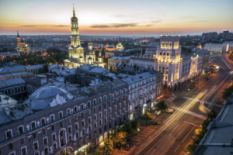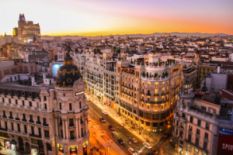Situated in the northeast of contemporary Ukraine, Kharkiv was originally built to protect the frontiers of the Moscow kingdom. Eventually, it turned into an outpost of Ukrainian statehood. During the times of the Cossack Hetmanate and the Russian Empire the city was central to the nascence of the Ukrainian intellectual and cultural elite, an important hub for the nationally conscious Ukrainian Intelligentsia. Kharkiv briefly served as the capital city of Soviet Ukraine in the 1920s and 1930s: the Bolshevik rule proved a unique period of rapid development for the country’s culture and national self-affirmation but subsequently brought about the defeat of those aspirations. In the spring of 2014 Kharkiv, this modern centre of science, culture and industry, once again reaffirmed its commitment to the country’s values in response to attempts at separatism. This historical experience is now part of the united Ukrainian nation’s heritage.
Cossacks sloboda villages
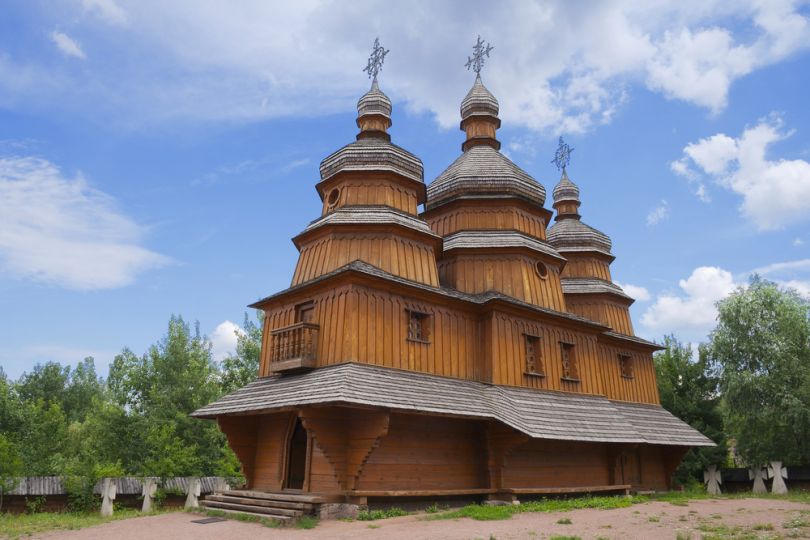 Kharkiv is a relatively young city. In the early 17th century, its current location was part of the so-called Wild Fields territory with its isolated fortified outposts aimed at protecting the southern borders of Muscovy from Tatar incursions. During the Khmelnitsky Uprising, the Ruin and Hetmanate periods, Cossacks began settling on the vast steppe expanses following a series of failed rebellions. They were joined by those fleeing the lands on the right bank of the Dnieper River in building settlements of free people called “sloboda”, which is how the historical name of the territory Slobozhanshchyna appeared. The region’s population was growing rapidly, shooting up from some 120,000 in the late 1600s to over 660,000 people one century later. It took just 100 years for Ukraine’s ethnic territory to increase by almost 100,000 square kilometres.
Kharkiv is a relatively young city. In the early 17th century, its current location was part of the so-called Wild Fields territory with its isolated fortified outposts aimed at protecting the southern borders of Muscovy from Tatar incursions. During the Khmelnitsky Uprising, the Ruin and Hetmanate periods, Cossacks began settling on the vast steppe expanses following a series of failed rebellions. They were joined by those fleeing the lands on the right bank of the Dnieper River in building settlements of free people called “sloboda”, which is how the historical name of the territory Slobozhanshchyna appeared. The region’s population was growing rapidly, shooting up from some 120,000 in the late 1600s to over 660,000 people one century later. It took just 100 years for Ukraine’s ethnic territory to increase by almost 100,000 square kilometres.
The sloboda villages were eventually made into Musovy’s military administrative divisions and later, following the 1765 disbandment of the Cossack regimental system, Kharkiv became a governorship centre of the Russian Empire. The Ukrainian Cossack seniors were admitted to the Russian ruling circles, whereas former rank-and-file Cossacks lost their free status and became serfs. Despite this, the city continued developing at a rapid pace.
The origins of Ukrainian identity
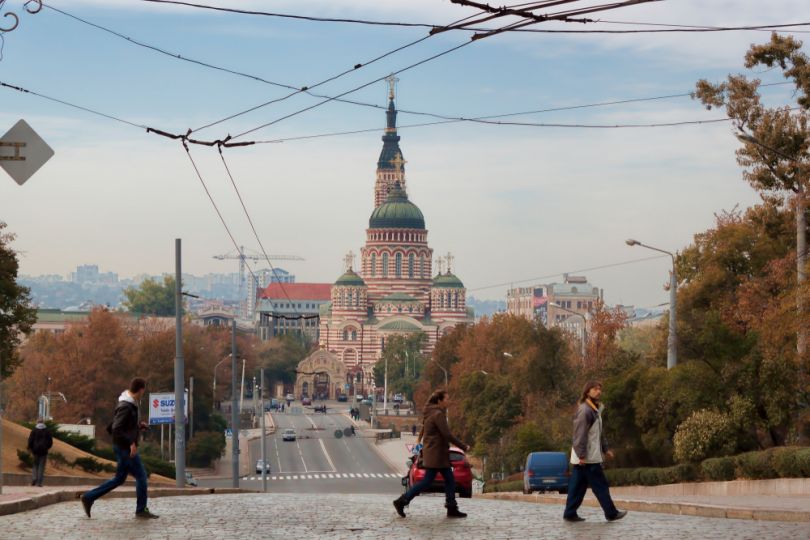 The 1805 foundation of Kharkiv University catalysed the transformation of the Russian Empire’s provincial town, with a population of just 10,000, into a leading educational, academic and cultural centre. In addition, and quite unexpectedly to the authorities of the time, Kharkiv pioneered Ukraine’s national consciousness that spread further across the country.
The 1805 foundation of Kharkiv University catalysed the transformation of the Russian Empire’s provincial town, with a population of just 10,000, into a leading educational, academic and cultural centre. In addition, and quite unexpectedly to the authorities of the time, Kharkiv pioneered Ukraine’s national consciousness that spread further across the country.
Despite active attempts by the Russian Empire to suppress any manifestations of Ukrainian identity, ethnic culture was thriving in Kharkiv in the early 19th century. It was here that numerous Ukrainian-language scientific and artistic works, newspapers, magazines and almanacs first appeared in print. The prominent Kharkiv-based Ukrainian cultural figures of the time included Hryhory Kvitka-Osnovyanenko, a writer, playwright and zealous defender of the Ukrainian literary language’s artistic possibilities. There were also the poet Petro Hulak-Artemovsky, the linguist and historian Izmail Sreznevsky; the poet and ethnographer Amvrosii Metlynsky, and other representatives of the Kharkiv Romantic School. One of them, Mykola Kostomarov, would later inspire and found the Brotherhood of Saints Cyril and Methodius, Ukraine’s first underground political organisation. Kostomarov was arrested in 1847 and exiled to the Russian town of Saratov. He subsequently moved to St Petersburg and spent the rest of his life there researching the history of Ukraine.
The artistic scene was also vibrant in Kharkiv, with the first professional theatre opening in 1780. Subsequent development of the Ukrainian theatrical scenery has been closely linked to the city. A prominent artistic school emerged in Kharkiv in the 19th century, standing out for its purely Ukrainian motifs and themes. Its representatives included the battle painter Serhii Vasylkivsky, who typically depicted scenes from Cossack campaigns, as well as the prominent Impressionist Mykhailo Tkachenko, internationally renowned as the Ukrainian Monet for his landscapes of Slobozhanshchyna. Ukrainian cinema was also born in Kharkiv: in 1896, almost simultaneously with the first public cinematic screening in Paris, photographer Alfred Fedetsky presented his documentary chronicle in the city. Also in 1896, the French brothers Bommer opened a permanent film theatre in Kharkiv, the first such eastablishment not just in the Russian Empire but in all of Eastern Europe. In fact, the Bommer theare is still operational!
Communist illusions
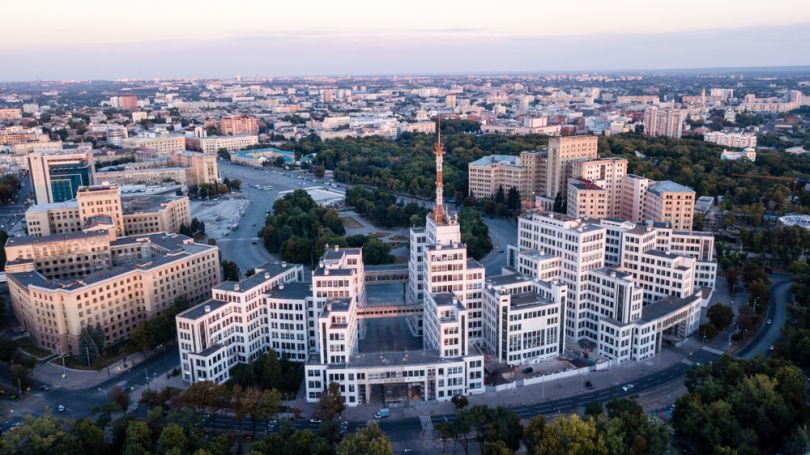 Kharkiv entered the turbulent 20th century as a powerful industrial centre of the Russian Empire, one that was simmering with pro-Ukrainian Socialist sentiment. The city’s prominent cultural figures of the time included the historian Dmytro Bahalii, the poet Pavlo Hrabovsky, and the writer, ethnographer and linguist Borys Hrinchenko, who compiled the first dictionary of the Ukrainian language. In 1900, Kharkiv-based lawyer and politician Mykola Mikhnovsky published the pamphlet “Independent Ukraine”, the country’s first pro-independence political manifesto. The pamphlet was criticised by contemporaries, but today Mikhnovsky is regarded as an ideologist of Ukrainian statehood. He went on to found the Ukrainian People's Party, whose platform served as the capstone for many subsequent generations of Ukrainian nationalists.
Kharkiv entered the turbulent 20th century as a powerful industrial centre of the Russian Empire, one that was simmering with pro-Ukrainian Socialist sentiment. The city’s prominent cultural figures of the time included the historian Dmytro Bahalii, the poet Pavlo Hrabovsky, and the writer, ethnographer and linguist Borys Hrinchenko, who compiled the first dictionary of the Ukrainian language. In 1900, Kharkiv-based lawyer and politician Mykola Mikhnovsky published the pamphlet “Independent Ukraine”, the country’s first pro-independence political manifesto. The pamphlet was criticised by contemporaries, but today Mikhnovsky is regarded as an ideologist of Ukrainian statehood. He went on to found the Ukrainian People's Party, whose platform served as the capstone for many subsequent generations of Ukrainian nationalists.
After the 1917 collapse of the Russian Empire, Kharkiv activists attempted to contact the Centralna Rada (the government of Ukraine in Kyiv) in order to jointly facilitate the creation of a Ukrainian independent state. This, however, proved nothing but wishful thinking. The Bolsheviks eventually took Kyiv in 1920, and Kharkiv was proclaimed the capital of Soviet Ukraine.
The Soviet government’s policy of Ukrainisation, whose aim was to assimilate the “non-Russian” ethnic republics and consolidate them under the new communist rule, resulted in the reinstatement of Ukrainian as a language of social communication and in the revival of Ukrainian arts. The best contemporary talent concentrated in Kharkiv during that period, including the writer and translator Valerian Pidmohylly; Les Kurbas, a theatrical director and the manager of the Berezil Theatre; and the playwright Mykola Kulish. Together they worked to changed the image of contemporary Ukrainian culture. Another Kharkiv luminary, the writer, poet and journalist Mykola Khvylovy, came up with the slogan “Away from Moscow!” This was not a call for a political or economic divorce from Russia, but rather the appeal to fellow writers to stop imitating Moscow and turn instead to “Europe with its psychologism”. Just like the plethora of devoted Ukrainian artists who would later become known as the Executed Renaissance, Khvylovy believed in the possibility of combining the two very different phenomena: communism and national ideology.
A wave of mass arrests on treason charges swept over Kharkiv. The 1930s put Ukraine under the toughest of tests as the brutal reprisals annihilated the national elite and the artificial famine massacred the peasantry. The capital of Soviet Ukraine was transferred to Kyiv in 1934, signaling the end of the failed experiment to build national communism in Ukraine.
The country’s new dawn
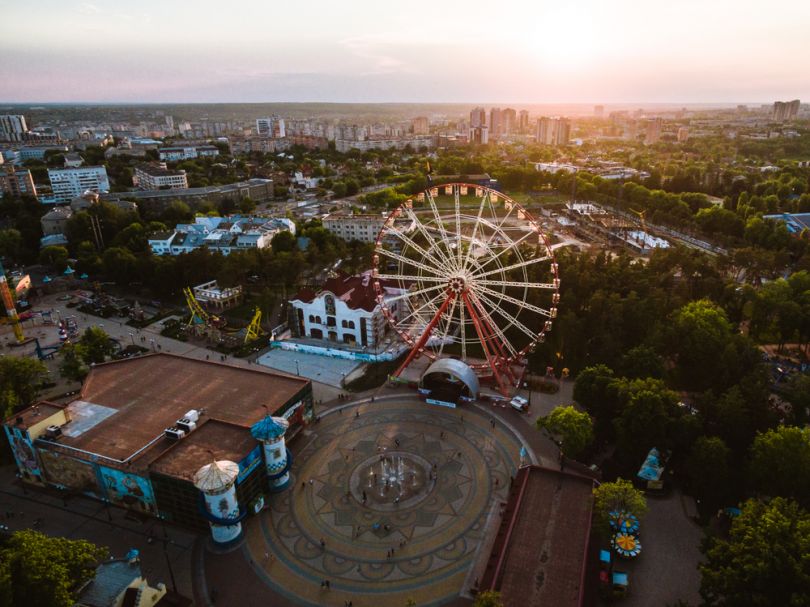 It would appear that the Soviet rule should have completely eradicated the last vestiges of national ideology in Kharkiv, this heavily Russified industrial and academic hub. However, the city supported not just the democratic Perestroika processes of the 1980s but also the pro-independence movement of that time. Over 86% of Kharkiv residents voted for Ukraine’s independence at the 1991 nationwide referendum. That said, the greatest challenge to the city’s democratic stance came in late 2013 and early 2014. The city successfully passed this test, reconfirming its commitment to statehood and unity. Kharkiv, now a modern developed metropolitan centre with a population of nearly 1.5 million, continues to play a critical part in the evolution of the Ukrainian nation.
It would appear that the Soviet rule should have completely eradicated the last vestiges of national ideology in Kharkiv, this heavily Russified industrial and academic hub. However, the city supported not just the democratic Perestroika processes of the 1980s but also the pro-independence movement of that time. Over 86% of Kharkiv residents voted for Ukraine’s independence at the 1991 nationwide referendum. That said, the greatest challenge to the city’s democratic stance came in late 2013 and early 2014. The city successfully passed this test, reconfirming its commitment to statehood and unity. Kharkiv, now a modern developed metropolitan centre with a population of nearly 1.5 million, continues to play a critical part in the evolution of the Ukrainian nation.
Author: Natalia Kyrylenko
Photos: shutterstock
